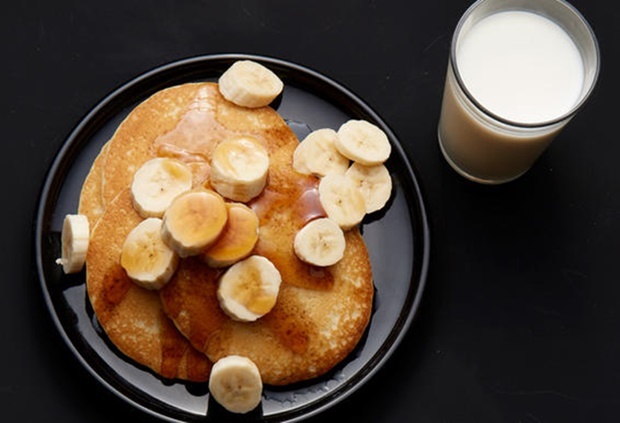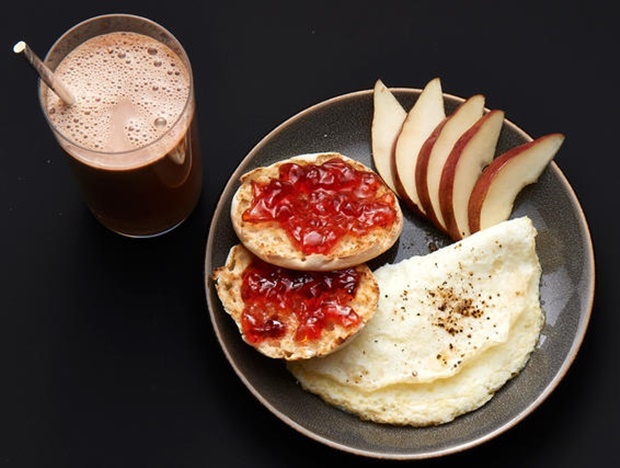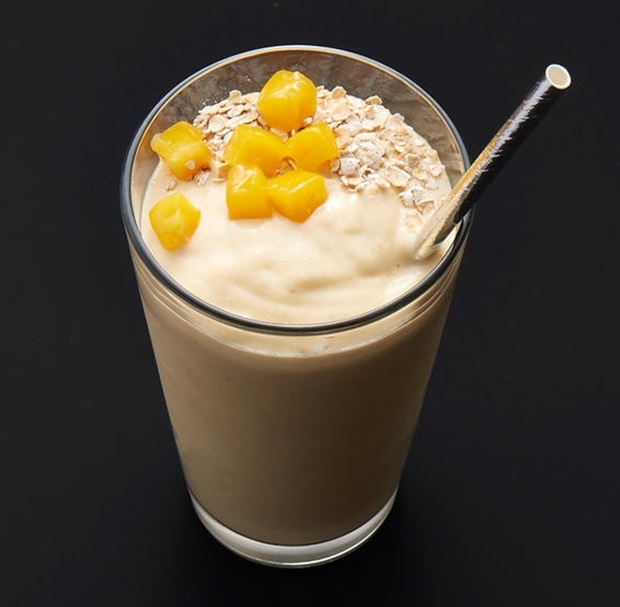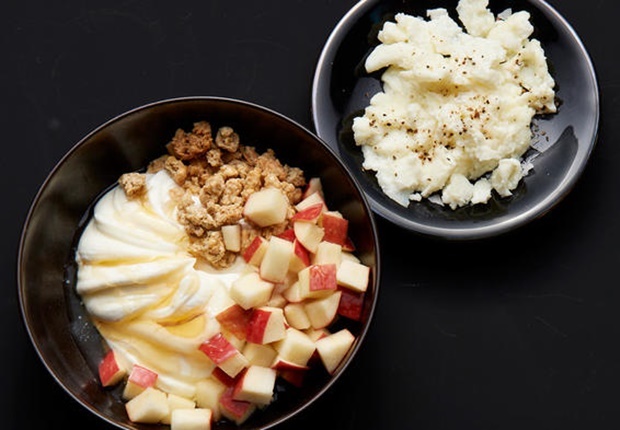I’ve always been into health and fitness. In high school, I worked in fitness centres and was really into eating healthy.
Now, I’m a registered dietician, so my love for soups and smoothies naturally evolved from my knowledge and personal health habits.
I’d go to smoothie shops if I was out, and for dinner I’d just have leftover veggies on hand at home so I’d make soups with them.
I love them so much I worked with Women’s Health to write a whole book about them: The Women’s Health Big Book Of Smoothies & Soups. I consider them my healthy secret weapon.
Read more: Here’s why your workout might be making you bloated
Soups and smoothies are a quick and easy way to get your fruit and veggie fix – and most people are not getting enough of either. In one smoothie, you can get two servings of fruit and three of veggies without feeling like you’re eating spinach.
The protein, antioxidants, vitamins and minerals help boost the your energy and your moods without feeling weighed down or sleepy like you do after eating a big bowl of pasta.
They’re ideal if you’re busy or stressed and don’t feel like cooking a meal and sitting down to eat it.
I probably have a smoothie five to six times a week now, usually as a lunchtime meal replacement or breakfast on busy days. It’s cold and refreshing and helps get my blood sugar up when I’m not super hungry.
I love a peanut-butter banana protein smoothie with almond milk or, if I’m not in the mood for that, one with berries and yogurt. I’ll bring it in the car and sip on it as I’m running errands.
Read more: 8 foods to eat tonight to de-bloat by tomorrow
Veggies are sometimes a challenge because they can go bad in the fridge before you get around to cooking them. That’s where soups come in especially handy: I usually make one big batch once a month and freeze it.
I like blending in cannellini beans, which gives soups a creamy flavour without adding heavy cream, along with lots of veggies like potatoes, carrots and spinach.
I’ll pull it out two nights a week, more often during the winter, to eat before dinner instead of salad. They’re great because they fill you up and satisfy you so don’t overdo it on the rest of your meal.
To keep your smoothies healthy, I recommend adding one cup of frozen or fresh fruit max and balancing with veggies and a source of protein (like a powder, peanut butter or yogurt) to make it a complete meal. With soups, skip those that are heavy on the cheese and cream, because they can get really high in kilojoules.
To keep the sodium in check, go for low-sodium veggie and chicken broth, or if you’re buying the canned stuff look for 400 to 500mg sodium max.
Read more How to ‘shrink’ your tummy in 24 hours
These days when I put on a few pounds over the holidays, I fall back on soups and smoothies to reset and get my diet back on track. If I overdo it on the weekend, I feel bloated and I’m not all that hungry on Monday.
Having a smoothie is always a great way to reset my diet and manage my weight by keeping my weekly calories balanced. I also find my skin doesn’t break out as much when I’m eating lots of homemade soups and smoothies because they both have lots of liquid, keeping me nourished and hydrated.
Making them helped transform my health – I can’t imagine life without them!
This article was originally published on www.womenshealthsa.co.za
Image credit: iStock
NEXT ON HEALTH24X

















